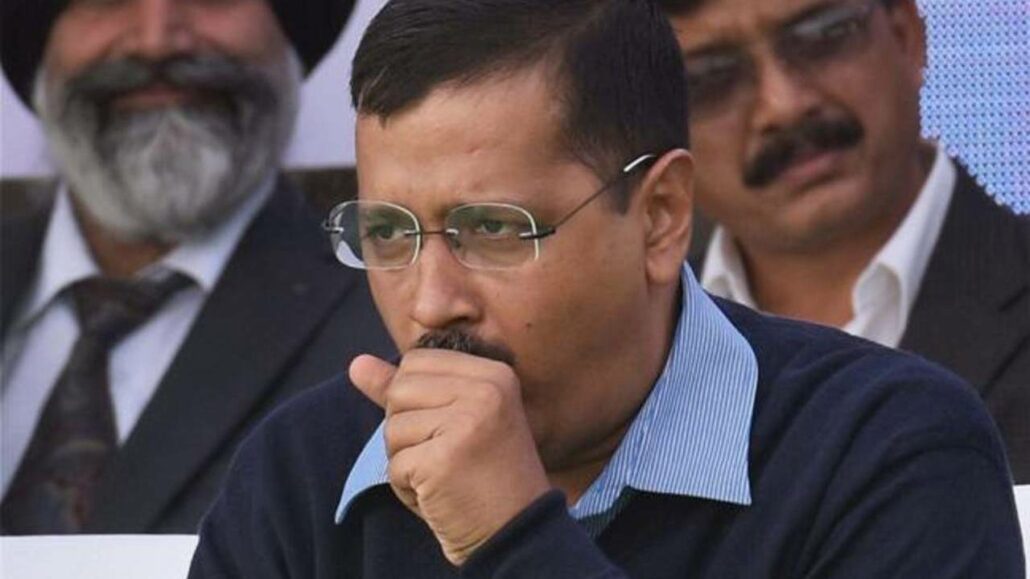COUGHING WITH SCARY MANDATE : New Delhi’s AIR POLLUTION

The victory speech after wining the election in New Delhi was lost in the leader’s bounty of cough due to Air Pollution. Election was won but what about pollution? That battle is still lost in the smoggy, smoky and foggy curtain that regularly appears on the New Delhi skies. READ.
The day Arvind Kejriwal led Aam Aadmi Party (AAP, which means Common Man’s Party) won unprecedented mandate in Delhi’s assembly election, 6500 kms away in City Council in Paris, France was busy in approving the measures to fight air pollution.
Considering the impacts on health and revenue from tourism, pollution free Paris is priority for the public as well as to the City Council of Paris. It announced the measures faster and firmer given that air pollution is as big a threat as terrorism recently witnessed during Charlie Hebdo event. Generally a clean city, at times Paris air can get worst, depending on the weather conditions. Monitoring and public display of the air quality index triggers alarms all over the city even for short duration of high level of air pollution. Last year, the City Council was forced to take measures like making public transport free and bringing down the use of cars. The pollution levels immediately came down. Air Pollution in New Delhi-now infamously known as city with choking roads and choking noses-is another story.
The day AAP was sweeping the election, the pollution was sweeping Delhi’s atmosphere. The Air Quality Index (AQI) on that day was three times the standard level. In winter, during election campaign, these levels were even 20 times higher. When I saw images of Arvind Kejriwal on TV, coughing incessantly while reacting to the electorate success of his party, I wondered if those PM 2.5 -extremely small size particles of 2.5 micron-are rushing deep into his lungs and getting absorbed in his body. Many of common men from juggi-zopadi (slums) who voted for him were also running a risk of ailments such as asthma, cardiovascular diseases, cancer, birth defects and, quite often, early death.
Kejriwal, publicly described his absolute majority as ‘scary’ due responsibility of carrying heavy mandate given to him. He has to be even scarier about the air-pollution in New Delhi. Fever of the celebration may have overshadowed his own bodily fever, but he has to understand the problem in its depth before start solving it. As every IIT-alumni like him-and likeme-knows very well, clear understanding of the problem itself is half of its solution and remaining is just applying the fundas. On the day, he was sworn-in as Delhi’s Chief Minister he even took crocin (paracetamol) tablet to bring down the fever. Would he understand that the problem of his frequent cough and fever is not just his hectic schedule but also Delhi’s polluted air, caused by the traffic as well as use of diesel, firewood and open burning?
Air pollution, today, is considered the single largest environment-related health risk, as per the reports of United Nations Environment Programme (UNEP) and World Health Organization (WHO) At the moment, over 1.2 billion people – most in rural areas – don’t have access to electricity and another equally large number of people in urban area whose access to electricity is extremely limited –even just about few hours a day. As a result, 2.8 billion rely on wood or other biomass to cook at their homes, which causes air-pollution. In 2012, approximately 7 million people died prematurely from illnesses attributable to household–indoor-and outdoor air pollution caused by the inefficient use of solid fuels – sometimes because they have no access to other fuels and have to rely on biofuels and biological matter to cook. This was more than double the combined total of HIV/AIDS and Diarrhea -related premature deaths, as per UNEP.
Recent WHO report, widely highlighted by media, gives New Delhi a status of the worst polluted city in the world. India’s Meteorological experts, sighting the misinterpretation of the measurements, vehemently wrong the report. Recently I came across the article in social media that calculated how many hours of life President Obama must have lost due to breathing Delhi’s polluted air by sitting and watching for 3 hours a republic day parade on 26th January 2015. Without getting into the technicalities of the arguments and counter rejoinders by Indian weathermen, it is beyond doubt that reducing air pollution could save thousands of lives in New Delhi and ailing of thousands of thousands of people due to respiratory diseases.
City Council of Paris has announced almost revolutionary measures with time lines to counter air pollution, including direct including cash subsidies to users of CNG vehicles, and electric/ hybrid cars, to cyclists, monetary concessions for users of public transports, free parking for cars using CNG, ban on use of diesel.
Unlike in Paris, the part of the root causes of Delhi’s pollution also lie in its nearby states, like Haryana, Punjab and Uttar Pradesh. Major sources of pollution are the black carbon particles matters of size less than 2.5 microns (PM 2.5) resulting from open burning of leftovers of paddy field in these neighboring states after the harvesting, and the use of diesel in the transport and generators.
When Kejriwal’s was making popular promises of corruption-free Delhi, free-electricity and free-water, Delhites were breathing dangerous air unaware of the need that along with audits of the electricity distribution companies, there is need to audit the use of generators and indiscriminate use of electricity, mainly due to inefficient air conditioners that increase the peak electricity loads to tripping levels. Along with making Delhi corruption-free, he should also make time bound plans for pollution-free Delhi. His discussions with neighboring states should be focused, apart from water supply- on the prevention of open burning of post-harvest paddy fields, use of firewood in inefficient chulhas (cooking stoves) and open brick-kilns.
Long-term futuristic plans described in AAP’s mandate are good. But immediate short-term measures that can bring down pollution level would help Kejriwal to get healthier people to vote for him next time. Would he now declare phone number to be called for above normal pollution level? And would he first announce the PM 2.5 levels at the place every time he holds Janata Darbar? END
(Above OpEd appeared in number of electronic media recently and was first published by IANS It was written by Rajendra Shende, IIT-Alumni, Chairman of TERRE Policy Centre and former Director UNEP)



Leave a Reply